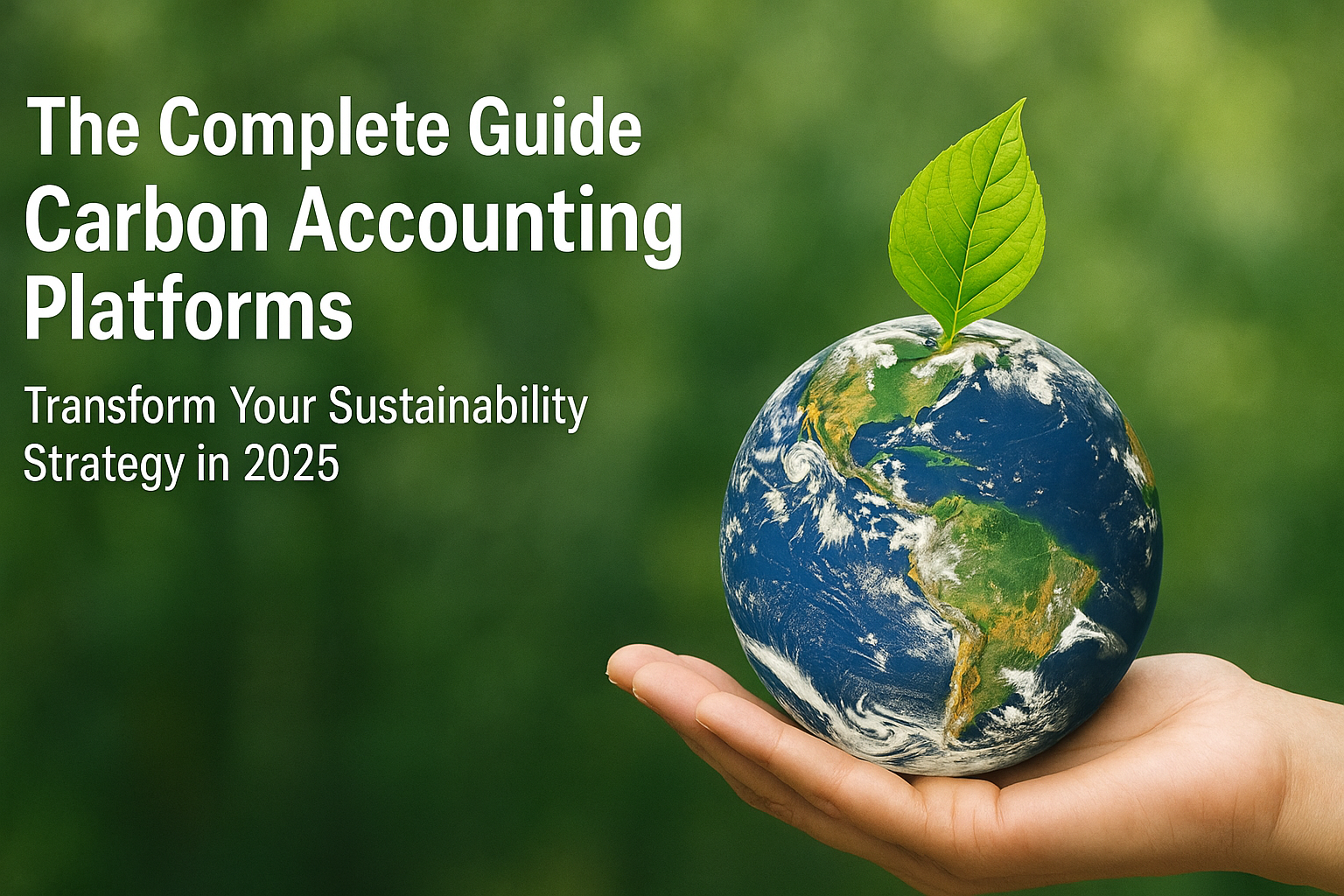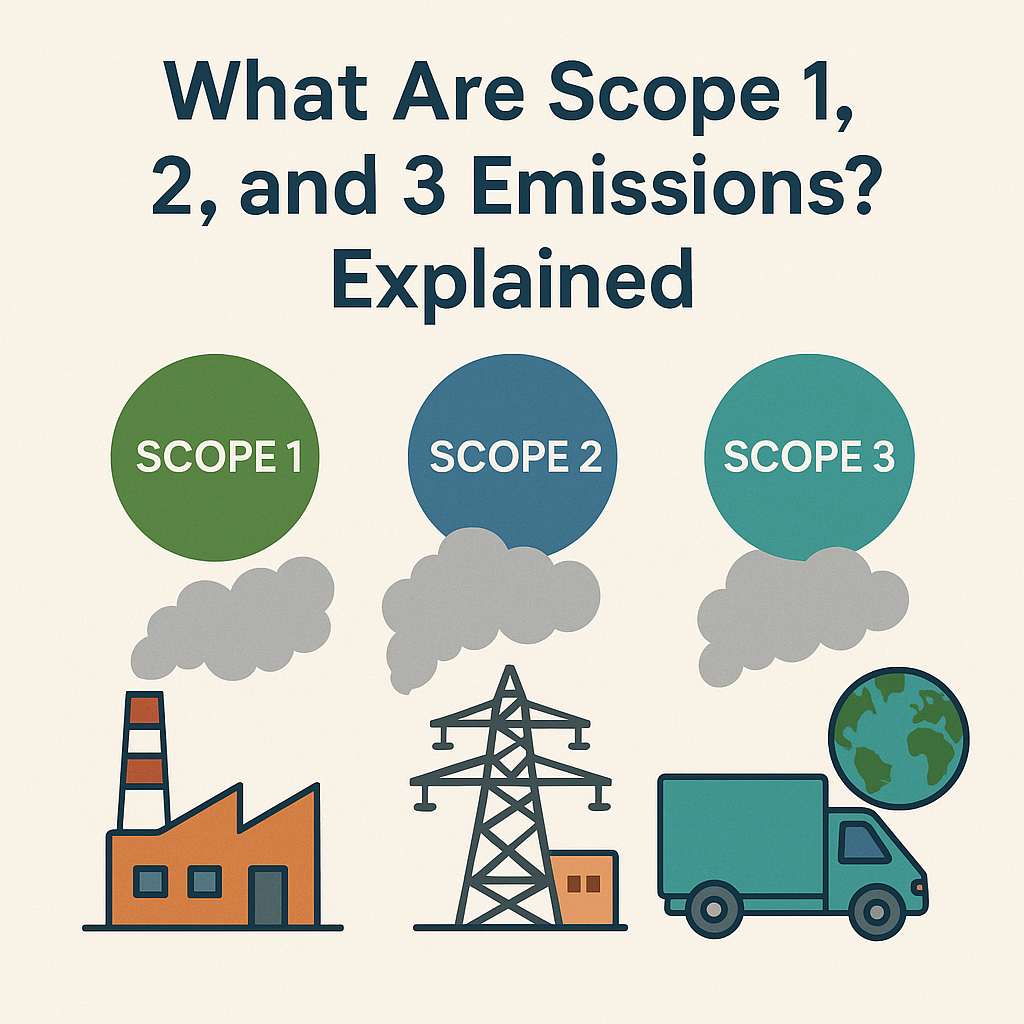As climate change concerns intensify and regulatory requirements tighten, businesses worldwide are recognizing the critical importance of accurate carbon footprint measurement and reporting. A robust carbon accounting platform has become essential for organizations seeking to track, manage, and reduce their greenhouse gas emissions while meeting compliance requirements and stakeholder expectations.
🔍 What is a Carbon Accounting Platform?
A carbon accounting platform is a comprehensive software solution designed to help organizations measure, track, and report their carbon emissions across all business operations. These platforms automate the complex process of carbon footprint calculation, enabling companies to gather emission data from multiple sources, apply appropriate emission factors, and generate detailed sustainability reports.
Modern carbon management software goes beyond simple calculations, offering features like real-time monitoring, predictive analytics, and integration with existing business systems. For companies serious about their net zero carbon strategy, these platforms serve as the foundation for data-driven decision-making and continuous improvement in environmental performance.
💼 Why Your Business Needs Carbon Accounting Software
📋 Regulatory Compliance and Risk Management
The regulatory landscape for corporate carbon reporting is evolving rapidly. The Corporate Sustainability Reporting Directive (CSRD) in Europe, SEC climate disclosure rules in the United States, and similar regulations worldwide are making carbon reporting mandatory for many organizations. A sophisticated emission tracking platform ensures compliance with these requirements while reducing the risk of penalties and reputational damage.
ESG reporting software integrated with carbon accounting capabilities helps businesses meet the growing demands from investors, customers, and stakeholders for transparent environmental performance data. Companies using comprehensive sustainability reporting tools are better positioned to access green financing, attract environmentally conscious customers, and maintain competitive advantage.
⚡ Operational Efficiency and Cost Reduction
Implementing a carbon footprint management system often reveals significant opportunities for operational improvements and cost savings. By providing detailed insights into Scope 1, Scope 2, and Scope 3 emissions, these platforms help identify inefficiencies in energy usage, supply chain operations, and resource consumption.
Organizations using advanced GHG accounting software typically discover that their most significant emission sources also represent their largest operational costs. This correlation makes carbon reduction strategies financially attractive, creating a compelling business case for sustainability investments.
🚀 Key Features of Modern Carbon Accounting Platforms
📊 Comprehensive Emission Tracking
Leading carbon accounting platforms provide complete coverage of all emission sources, including:
- Direct emissions (Scope 1): On-site fuel combustion, company vehicles, and industrial processes
- Indirect energy emissions (Scope 2): Purchased electricity, steam, and cooling
- Supply chain emissions (Scope 3): Upstream and downstream activities throughout the value chain
Advanced emission monitoring software uses automated data collection, API integrations, and machine learning algorithms to ensure accuracy and reduce manual data entry. This comprehensive approach enables organizations to develop effective carbon reduction plans based on complete visibility into their environmental impact.
🔄 Real-Time Data Integration
Modern environmental data management systems excel at integrating data from multiple sources, including:
- Energy management systems and smart meters
- Enterprise resource planning (ERP) systems
- Supply chain management platforms
- Travel and expense reporting tools
- Facility management systems
This integration capability ensures that carbon footprint tracking remains current and accurate, enabling organizations to respond quickly to changes in their operations or environmental performance.
📈 Advanced Analytics and Reporting
Sophisticated carbon reporting software provides powerful analytics capabilities that transform raw emission data into actionable insights. Features include:
- Customizable dashboards and visualizations
- Trend analysis and performance benchmarking
- Scenario modeling for carbon reduction initiatives
- Automated report generation for various stakeholders
- Predictive analytics for future emission projections
These analytics capabilities are essential for developing effective climate action plans and communicating progress to stakeholders through compelling sustainability reporting.
🛠️ Implementing a Carbon Accounting Strategy
🎯 Phase 1: Baseline Establishment
The first step in any successful carbon management program involves establishing an accurate baseline of current emissions. This process requires:
Data Collection and Validation: Gathering comprehensive data from all emission sources and ensuring data quality through validation processes and audit trails.
Emission Factor Selection: Choosing appropriate emission factors from recognized databases such as EPA, DEFRA, or industry-specific sources to ensure accuracy and credibility.
Boundary Definition: Clearly defining organizational and operational boundaries to ensure consistent measurement and reporting over time.
🔗 Phase 2: System Integration and Automation
API-based Integration: Modern carbon tracking software offers robust API capabilities that enable seamless integration with existing business systems, reducing manual data entry and improving data accuracy.
Automated Data Collection: Implementing automated data collection processes ensures that emission tracking becomes a routine part of business operations rather than a periodic exercise.
Quality Assurance Protocols: Establishing data quality checks and validation procedures helps maintain the integrity of carbon accounting data over time.
📝 Phase 3: Reporting and Communication
Standardized Reporting: Generating reports that comply with recognized frameworks such as GRI, TCFD, CDP, and emerging regulatory requirements.
Stakeholder Communication: Creating clear, compelling communications about environmental performance for investors, customers, employees, and regulatory bodies.
Continuous Improvement: Using platform analytics to identify opportunities for emission reductions and operational improvements.
🎯 Selecting the Right Carbon Accounting Platform
⚙️ Technical Capabilities
When evaluating carbon accounting software solutions, consider these technical requirements:
Scalability: The platform should accommodate your organization's growth and evolving reporting requirements without performance degradation.
Data Security: Robust security features, including encryption, access controls, and compliance with data protection regulations.
Integration Flexibility: Ability to connect with your existing technology stack through APIs, file imports, or direct database connections.
Customization Options: Flexibility to adapt the platform to your specific industry requirements, organizational structure, and reporting needs.
👥 User Experience and Support
Intuitive Interface: A user-friendly interface that enables team members across different departments to contribute to carbon accounting efforts effectively.
Training and Support: Comprehensive training programs and ongoing support to ensure successful platform adoption and optimal utilization.
Documentation and Resources: Extensive documentation, best practice guides, and educational resources to support your carbon management journey.
💰 Cost Considerations
Total Cost of Ownership: Consider not just license fees but also implementation costs, training expenses, and ongoing maintenance requirements.
Return on Investment: Evaluate the platform's potential to deliver cost savings through improved efficiency, reduced compliance costs, and enhanced decision-making capabilities.
Scalable Pricing: Pricing models that can accommodate your organization's size and growth trajectory without creating budget constraints.
🔮 The Future of Carbon Accounting Technology
🤖 Artificial Intelligence and Machine Learning
Next-generation carbon accounting platforms are incorporating AI and ML capabilities to provide:
- Automated anomaly detection in emission data
- Predictive modeling for future emission scenarios
- Intelligent recommendations for carbon reduction opportunities
- Natural language processing for sustainability report generation
⛓️ Blockchain and Verification
Emerging technologies are enabling new approaches to carbon footprint verification:
- Blockchain-based audit trails for emission data
- Smart contracts for automated carbon offset transactions
- Decentralized verification networks for enhanced credibility
📡 Real-Time Monitoring
Advanced sensor networks and IoT technologies are enabling real-time emission monitoring capabilities that provide immediate feedback on environmental performance.
✅ Best Practices for Carbon Accounting Success
🏢 Organizational Alignment
Executive Sponsorship: Securing strong leadership support ensures adequate resources and organizational priority for carbon management initiatives.
Cross-Functional Teams: Involving representatives from operations, finance, procurement, and other relevant departments creates comprehensive coverage and shared accountability.
Clear Governance: Establishing clear roles, responsibilities, and decision-making processes for carbon accounting activities.
📊 Data Quality Management
Regular Audits: Implementing periodic reviews of data sources, calculation methods, and reported results to maintain accuracy and credibility.
Continuous Improvement: Regularly updating emission factors, calculation methods, and data collection processes to reflect current best practices.
Third-Party Verification: Engaging independent auditors to verify emission calculations and reporting accuracy builds stakeholder confidence.
🎯 Strategic Integration
Business Planning: Integrating carbon accounting insights into strategic planning processes, capital allocation decisions, and operational improvements.
Performance Management: Incorporating carbon metrics into performance dashboards, KPIs, and management reporting systems.
Risk Management: Using carbon accounting data to assess climate-related risks and opportunities across business operations.
🎉 Conclusion: Accelerating Your Carbon Management Journey
A comprehensive carbon accounting platform is no longer a luxury for forward-thinking organizations—it's a business necessity. As regulatory requirements intensify and stakeholder expectations evolve, companies need sophisticated tools to measure, manage, and report their environmental impact accurately.
CarbonAnalytics provides the advanced carbon management software capabilities organizations need to succeed in today's sustainability-focused business environment. Our platform combines powerful analytics, seamless integration, and user-friendly design to make carbon accounting accessible and actionable for businesses of all sizes.
The journey toward net zero emissions begins with accurate measurement and transparent reporting. By implementing a robust carbon accounting platform, your organization can build the foundation for effective climate action, regulatory compliance, and sustainable business growth.
Ready to transform your approach to carbon footprint management? Contact CarbonAnalytics today to learn how our platform can accelerate your sustainability journey and deliver measurable results for your organization and the environment.
Discover how CarbonAnalytics' comprehensive carbon accounting platform can help your organization achieve its sustainability goals. Visit carbonanalytics.com to schedule a demo and explore our full range of carbon management solutions.



